Related Research Articles
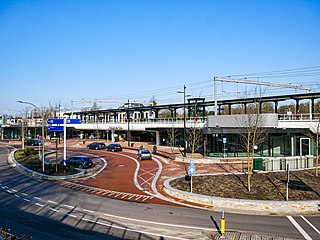
Driebergen-Zeist is a railway station located between Driebergen and Zeist, the Netherlands. It is located in the municipality of Utrechtse Heuvelrug. The station was opened on 17 June 1844 and is located on the Amsterdam–Arnhem railway. The station is operated by Nederlandse Spoorwegen. In 2018 there were approximately 8,787 passengers per day using Driebergen-Zeist station. The station was renovated from 2017 to 2020.
The Halle train collision was a collision between two NMBS/SNCB passenger trains carrying a combined 250 to 300 people in Buizingen, in the municipality of Halle, Flemish Brabant, Belgium, on 15 February 2010. The crash occurred in snowy conditions at 08:28 CET (07:28 UTC), during rush hour, on railway line 96 (Brussels–Quévy) about 12 kilometres (7.5 mi) from Brussels between P-train E3678 from Leuven to Braine-le-Comte and IC-train E1707 from Quiévrain to Liège. A third train was able to come to a stop just in time. The collision killed 19 people and injured 171, making it the deadliest rail crash in Belgium in over fifty years.

The Schiedam train disaster took place in the Netherlands on 4 May 1976 near the station Schiedam Rotterdam-West. The international Rhine Express boat train from Hook of Holland, which left for Munich and was hauled by NS Class 1300 electric locomotive no. 1311 Best collided with a train of the then new sprinter type, coming from Rotterdam. The collision caused the deaths of 24 people, five people were severely injured and dozens more had minor injuries.
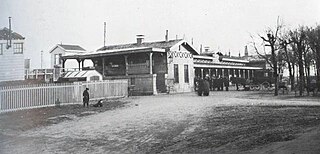
On 10 August, 1856 two passenger trains collided at the Amsterdam–Haarlem–Rotterdam railway near Delfshaven between Schiedam Centrum station and Rotterdam Centraal station, the Netherlands. Two carriages where destroyed with a third being severely damaged. Three passengers lost their lives and at least nine were injured.

The Winsum train disaster took place on 25 July 1980 near Winsum in the Dutch province of Groningen. Nine people died and 21 were injured.
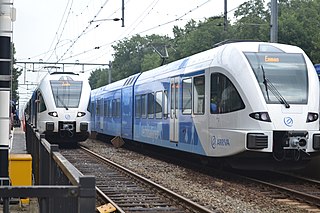
The Dalfsen train crash occurred on 23 February 2016 when a passenger train collided with a tracked elevated work platform on a level crossing at Dalfsen, Overijssel, Netherlands. One person was killed and six were injured, one seriously.
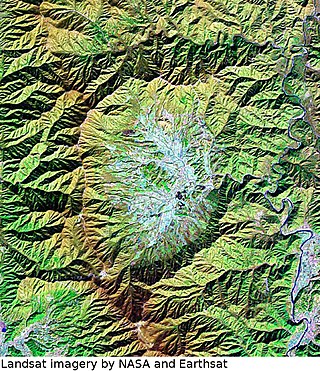
The 1956 Punchbowl avalanche was a snow avalanche that occurred on 2 March 1956 on a mountain in Punchbowl, South Korea. The avalanche destroyed a base of the South Korean army. Over 100 soldiers were killed or missing.

The Transports Aériens Intercontinentaux Douglas DC-6B scheduled flight from Saigon, Vietnam to Paris, France crashed on 20 February 1956 before its third stopover 25 km North-East of Cairo International Airport due to crew error and possible fatigue. 52 people on board were killed.

On 24 November 1956 the Linee Aeree Italiane Douglas DC-6B "I-LEAD" was an international scheduled passenger flight from Rome via Paris and Shannon to New York. Shortly after take off from Paris Orly Airport the airplane lost altitude and crashed into houses in the commune Paray-Vieille-Poste. 34 of the 35 people on board were killed, including Italian orchestral conductor Guido Cantelli.

On 24 November 1956 the ČSA Czechoslovak Airlines Ilyushin Il-12B "OK-DBP" was an international scheduled passenger flight from Zürich to Prague. Shortly after take off from Zurich-Kloten Airport the airplane crashed 12 kilometres (7.5 mi) north of the airport in a field near Eglisau and Wasterkingen, Switzerland. All 23 people on board were killed.
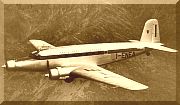
On 1 July 1948 the Avio Linee Italiane Fiat G.212PW “I-ELSA” was an international scheduled passenger flight from Linate Airport, Milan, Italy to Zaventem Airport, Brussels, Belgium. The airplane crashed during an emergency landing at 12:20pm local time. Eight of the twelve people on board were killed.

A Faucett Perú operated domestic scheduled Lima–Huánuco–Tingo Maria passenger flight, operated with a Douglas C-54, crashed on 8 December 1967 against a mountain at Cordillera de Carpish. All 66 passengers and 6 crew members aboard were killed.
PS Jan van Arkel II was a Dutch passengers paddle steamer of the Gorinchemsche Schiedamsche Stoomboot-maatschappij built by Fop Smit and launched on 8 March 1847. The ship was used for the 's-Hertogenbosch—Gorinchem—Schiedam line.
On 30 April 1979, Mount Marapi, a complex volcano on the Indonesian island of Sumatra and the most active complex volcano in West Sumatra province, erupted, killing between 80 and 100 people.

Metro Line 51, also known as the Ring Line, is an Amsterdam Metro line running from Amsterdam Centraal station to Isolatorweg metro station, almost creating a full circle through Amsterdam. It was opened in December 1990 as a metro/tram hybrid line named sneltram and served the suburb of Amstelveen. Using special rolling stock, the Amstelveen Line ran as a metro on 750 V DC third rail from Amsterdam Centraal to the Amsterdam Zuid station, where it would switch operation modes and utilize 600 V DC overhead lines and end at Poortwachter. An extension to Westwijk was completed in 2004. In Amstelveen, the line partially ran on the same track as tram line 5 and had many level crossings.
SS Thasos was an 82-metre (269 ft) German cargo steamship, built in 1879 as Theben for Kosmos Line's service between Hamburg and South America. In 1895 the ship was acquired by the Deutsche Levante-Linie and renamed Thasos for their scheduled service to countries around the Black Sea.
On 26 February 1965 a passengers train collided head on with a freight train 100 kilometres north of Khartoum, Sudan killing 100-120 people.

The 1994 Tolunda rail disaster happened near Tolunda, in the Namibe Province, Angola on 22 September 1994. A freight train of the Benguela railway derailed due to malfunctioning brakes and crashed into a 10 metres deep ravine. 300 people died and around 147 people were injured.

S1 and S2 units, collectively called S1/S2, were electric multiple unit trains used on the Amsterdam Metro in Amsterdam, The Netherlands. Built by La Brugeoise et Nivelles (BN), 13 of these units were ordered by the GVB in 1988 (S1), as well as an additional 12 later in 1991 (S2), for a new line from Amsterdam Centraal station to the suburb of Amstelveen. This line, named the Amstelveen Line and later numbered as 51, was initially expected to be a full metro line, but it was later changed to a tram-metro hybrid named sneltram due to protests against the metro in the preceding decades. From Amsterdam Centraal to Amsterdam Zuid, Line 51 ran as a regular metro on 750 V DC with third rail pick up, used on the regular metro network. At Zuid, the trains converted to 600 V DC via overhead lines, used by the city's tram network, and served Amstelveen as a faster tram service. On the latter part of the route, the line shared tracks and stops with a regular tram line and ran on public roads with crossings.
References
- 1 2 3 4 "Treinongeluk in Zuid-Afrika kost 80 levens". Nieuwsblad van het Noorden (in Dutch). 5 October 1965 – via Delpher.
- 1 2 "Het aantal". Friese Koerier (in Dutch). 9 October 1965 – via Delpher.
- 1 2 3 4 "Begrafenis van 87 rampslachtoffers". Het Vrije Volk (in Dutch). 9 October 1965 – via Delpher.
- 1 2 "Gelyncht na de treinramp". De Telegraaf (in Dutch). 6 October 1965 – via Delpher.
- 1 2 3 4 5 6 7 "South Africa: The Wreck of the 5:28". Time . 15 October 1965.
- ↑ "Zuid-Afrika | 84 doden bij treinongeluk". De Waarheid (in Dutch). 5 October 1965 – via Delpher.
- 1 2 3 "Treinramp in Durban: 150 doden". Algemeen Dagblad (in Dutch). 5 October 1965 – via Delpher.
- ↑ "Treinramp in Zuid-Afrika". Trouw (in Dutch). 5 October 1965 – via Delpher.
- ↑ "Treinramp in Z.-Afrika: 150 doden". Limburgsch Dagblad (in Dutch). 5 October 1965 – via Delpher.
- 1 2 3 "Treinramp in Zuid-Afrika; al 84 doden". Het Vrije Volk (in Dutch). 5 October 1965 – via Delpher.
- ↑ "Treinramp in Zuid-Afrika; 150 doden". De Nieuwe Limburger (in Dutch). 5 October 1965 – via Delpher.
- 1 2 "Ruim 80 doden bij treinramp in Z.-Afrika". Trouw (in Dutch). 6 October 1965 – via Delpher.
- ↑ "Het aantal slachtoffers van de treinramp". Gereformeerd gezinsblad (in Dutch). 8 October 1965 – via Delpher.
- ↑ "Grote spoorramp in Zuid-Afrika". Algemeen Handelsblad (in Dutch). 5 October 1965 – via Delpher.
- ↑ "Wisselwachter vermoord | Bij spoorwegramp in Zuid-Afrika ruim 80 doden". Leeuwarder Courant (in Dutch). 5 October 1965 – via Delpher.
- 1 2 "Grave stone image of Walter Wilfred Hartslief". graves-at-eggsa.org. Retrieved 25 March 2024.
- ↑ "Treinramp kost 't leven aan 83 negerarbeiders | Woedende menigte naar plaats van ongeluk". Twentsch dagblad Tubantia (in Dutch). 5 October 1965 – via Delpher.
- ↑ "Bantoes veroordeeld". Leidsch Dagblad (in Dutch). 12 August 1966. p. 2 – via leiden.courant.nu.
- ↑ "Begrafenis slachtoffers treinramp Durban". De Waarheid (in Dutch). 9 October 1965 – via Delpher.